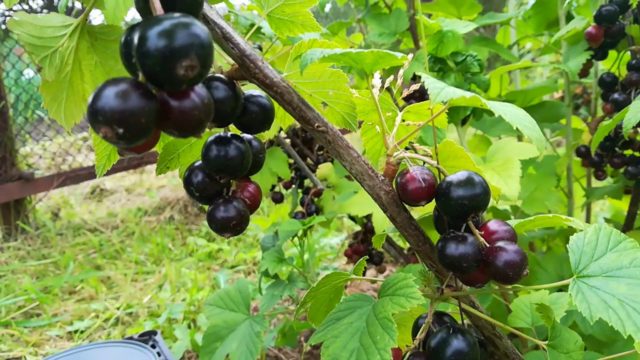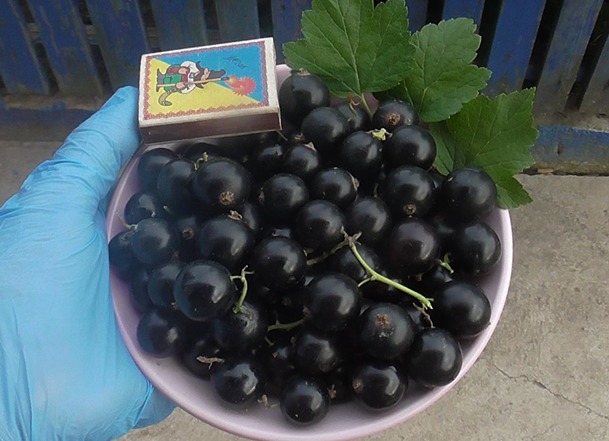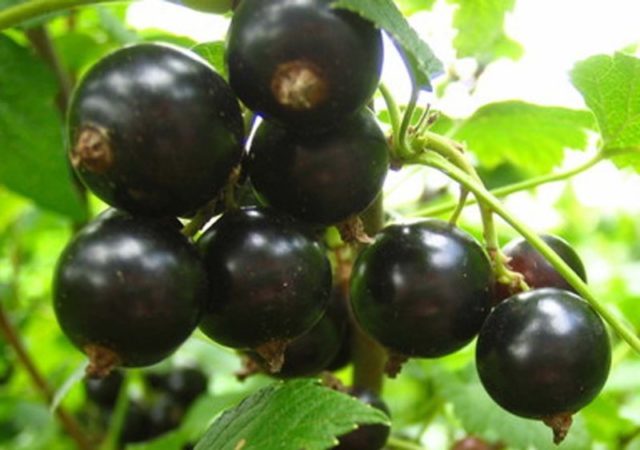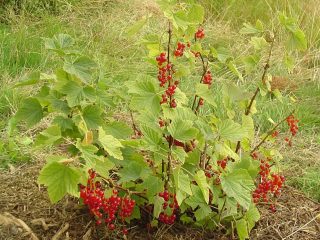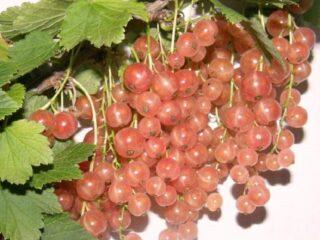Content
Currant is a popular plant that can be found in almost every summer cottage. The berries of this shrub are valued due to the presence in their composition of a whole complex of useful vitamins and microelements, for their pleasant taste and unpretentiousness in breeding and growing. Black currant Litvinovskaya is a relatively recent variety bred by Russian breeders, which has very successfully proven itself among gardeners.
Description of black currant Litvinovskaya
The black currant variety Litvinovskaya was invented in 2008 by crossing the Selechenskaya variety and the CH 6-28-105 form, at the same time an entry was made about this shrub in the State Register of Breeding Achievements of the Russian Federation in 2008.
The black currant variety Litvinovskaya belongs to the early flowering varieties. The shrub begins to bloom around mid-May. After a month and a half (late June - early July), the shrub harvest finally ripens and is ready to be harvested.
Description of black currant variety Litvinovskaya:
Described part | Characteristic |
Bush | It is quite high and averages 1.5 - 2 m in length. Due to the fact that the branches of the bush are located straight, it is not very spreading. |
Plant root system | It is highly branched and can extend inward by about 0.4 m. |
Flowers | Color: lilac or pale purple. Arrangement on the hand - in groups of 7 - 11 pieces. |
Kidney | They have an oval and slightly pointed shape and are located from the shoot. |
Leaves | The size of the leaves is medium, the color is bright green (at the base of the leaf, the color is even more saturated). The structure of each sheet has a distinct system of veins. All leaves are three-lobed and medium pointed. |
Berries | The shape is round, slightly flattened. The color of the berries is deep black, the peel is thick, has a glossy sheen. The berries have a very rich aroma, sweet taste and large size (the weight of one fruit can reach 4.5 g). |
Preferred breeding and rearing locations | Central, Chernozem regions. In addition, due to a sufficiently high resistance to cold weather, breeding in such regions as the Urals, Siberia, and the North-West is permissible. |
The description of the black currant variety Litvinovskaya clearly demonstrates the photo:
Characteristics
The black currant variety Litvinovskaya has a number of distinctive features, thanks to which it can be distinguished from the total mass of varieties of this plant. The main task of scientists during its creation was the breeding of such a variety of black currant, which would differ from others in its high resistance to various weather and climatic conditions of the place of growth, and would also give sweet fruits. The described shrub became just like that.
Drought resistance, frost resistance
The black currant variety Litvinovskaya is very frost-resistant. It tolerates cold winters, early frosts well, as well as sudden spring frosts. Such characteristics make it possible to grow a plant even in areas such as Siberia and the Northwest.
Shrub frost resistance:
- the root system of the bush is not threatened by temperatures up to 17 degrees below zero;
- still closed flowers can withstand temperatures up to minus 5 degrees;
- open buds will remain at temperatures up to 4 degrees below zero;
- the resulting ovary will not die under conditions that the ambient temperature does not fall below minus 3 degrees.
The situation is completely different with the drought resistance of the black currant variety Litvinovskaya. It is very susceptible to heat and high ambient temperatures, and it is negatively tolerant to drought. This fact obliges all gardeners to pay much more attention to the plant during periods of intense heat and long absence of rain.
Variety yield
Black currant varieties Litvinovskaya belongs to varieties with a fairly fast ripening period. The shrub begins to bloom in mid-May and can be harvested at the end of the first summer month.
On average, about 2.3 kg of berries are obtained from one black currant bush of the Litvinovskaya variety, which indicates a fairly high yielding capacity.
Black currant variety Litvinovskaya is not prone to shedding, provided that all the necessary conditions for planting and caring for the plant are met. If such a phenomenon still takes place, then the cause of shedding is most likely:
- a large number of old branches on the bush (which indicates an insufficient amount of care for the bush);
- lack of moisture (this is especially true for the hot and dry period, when the plant requires additional watering);
- wrong landing site;
- pests (larvae and insects that cause irreparable harm to the plant);
- untimely collection of ripe berries and overloading of branches.
Due to the fact that the skin of black currant berries of the Litvinovskaya variety is very thick and durable, these berries perfectly tolerate transportation. If we are talking about transporting crops over a very long distance, then it is imperative to use vehicles equipped with special equipment for the transportation of goods of a similar nature.
Grinding of berries is not typical for this shrub. If this is the case, then the reason may lie in one of the following factors:
- improper plant care (incorrect or insufficient thinning, untimely pruning of old branches);
- wrong landing site.
Application area
The purpose of black currant berries of the Litvinovskaya variety is universal. Due to their rich, sweet taste, they can be eaten fresh. They are also suitable for preparation on their basis of various types of preservation, blanks and technical processing. The industrial use of the berries of this variety is facilitated by the fact that its fruits can be stored for a long enough time provided that all the conditions necessary for this are observed, and also very successfully tolerate transportation.
Pros and cons of the variety
The black currant of the Litvinovskaya variety has its own pronounced advantages and disadvantages, like absolutely any other fruiting plant species. The advantages and advantages of such a shrub are much more than disadvantages.
Dignity | disadvantages |
Large berries with a rich aroma and sweet taste. | Poor tolerance for too hot weather and drought. |
The berries are convenient in their collection, since they practically do not choke and are easily squeezed from the twigs. | Immunity to kidney mites. |
High resistance to low temperatures. |
|
Good transport tolerance. |
|
Practically not susceptible to fungal diseases. |
|
The shrub does not need additional pollinators. |
|
Reproduction methods
Reproduction of black currant varieties Litvinovskaya has several options.
Breeding option | Characteristic |
Breeding with seeds | This method, as a rule, is used only by scientists with the aim of breeding new varieties. |
Breeding by cuttings (with a lignified trunk) | The most common and effective way |
Breeding with green cuttings | A more costly method in terms of the effort involved. Assumes the initial planting of the cuttings in a greenhouse. |
Breeding by cuttings tops | Complex method. It requires special equipment (to maintain a certain ambient temperature in the room where the plant grows, as well as the required air humidity). |
Breeding by layering | A method that guarantees the survival of a new plant with a 100% probability. It will take 1 year to complete. |
Breeding by dividing the shrub | The fastest and easiest way. |
Planting and leaving
In order for a black currant sapling of the Litvinovskaya variety to take root on the site, you should start with its correct choice. It is recommended to purchase seedlings of this fruiting shrub exclusively in proven nurseries and gardening stores. The plant must be completely healthy, there must be no rotten spots and spots on its roots and branches.
The next step is to choose the right footprint. It should be borne in mind that it must be chosen in a bright area. It is preferable to plant a bush near the fence so that it is closed from the wind on at least one side. Black currants thrive well under the canopy of tall trees that provide some protection from direct sunlight. The soil at the site of planting of currants should be slightly moistened.
The timing of planting black currant varieties Litvinovskaya varies, depending on the region of growth:
- in southern regions with a relatively warm climate, planting can be carried out both in spring and in autumn;
- in the northern regions, the recommended planting time is only spring. Bushes planted in spring, which have not yet managed to take root in a new place, may simply not survive the harsh climatic conditions of winter.
The algorithm of actions when planting black currant seedlings of the Litvinovskaya variety should be approximately as follows:
- dig a hole (width - 0.6 m; depth - 0.5 m). When planting several seedlings at the same time, the holes should be placed at a distance of at least 2 m from each other;
- at the bottom of the hole, you need to lay out a layer of fertilizers (humus + potassium + superphosphate) and cover it with a layer of soil (approximately 10 cm);
- pour these components with warm, settled water (about 5 liters);
- then it is necessary to plant a seedling, straighten its root system and cover everything with soil;
- the earth should be thoroughly crushed and watered with 5 liters of water;
- after planting, it is important to cut the shrub.
Follow-up care
Subsequent care for the black currant variety Litvinovskaya involves the implementation of standard procedures:
- Watering. The shrub needs the greatest watering at the time of flowering and ripening of fruits. In addition, it must be remembered that this plant is not very resistant to extreme heat and therefore, during dry periods, it needs additional moisture. Watering one shrub at a time takes, on average, 10 liters of water, while the soil should be moistened at least 20 cm deep;
- Loosening the soil. This procedure must be carried out throughout the summer season, at least 1 time per month;
- Top dressing. The first 2 years, the shrub does not need additional feeding. Starting from the 3rd year, the procedure must be repeated 4 times per season: in early spring, when the snow melts (nitrogenous fertilizers); during the formation of berries (potassium + phosphorus); during the ripening period of berries (potassium + phosphorus); autumn (manure or compost);
- Pruning (involves thinning and removing dry branches). Performed in early spring and autumn;
- For the winter, it is recommended to insulate the trunk with horse manure and bend the branches to the ground, securing their ends with bricks;
- If there is a threat that the shrub may suffer from the activity of rodents, care should be taken to protect the plant from them, using one of their mechanical or chemical means of protection.
Pests and diseases
The most common pest from which the black currant variety Litvinovskaya most often suffers is the kidney mite. Its parasitic activity leads to the fact that the buds of the plant acquire an unusual shape, the leaves dry out, moisture leaves the bush, and the yield decreases low. In order to detect a pest, it is necessary to carefully examine the plant, remove all affected buds, and if there are a large number of them, completely cut out the entire branch. As a preventive measure in early spring, it is recommended to pour boiling water over the shrub or spray with water with the addition of garlic juice. Special chemicals are highly effective, but they should not be used during fruiting.
Conclusion
Black currant Litvinovskaya is a real discovery for gardeners. The berries of this shrub have a pleasant sweet taste and are characterized by an early ripening period. The plant is very unpretentious in care and, subject to all the necessary conditions for planting and subsequent processing, will delight its owner with a bountiful harvest for a long time.
